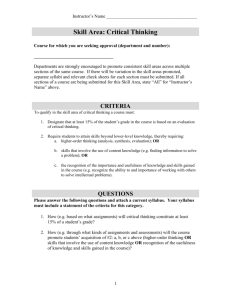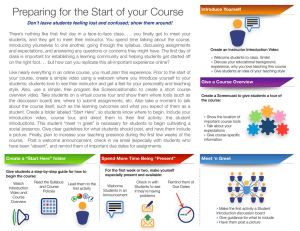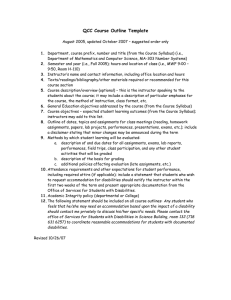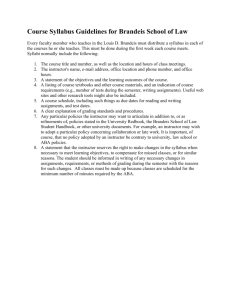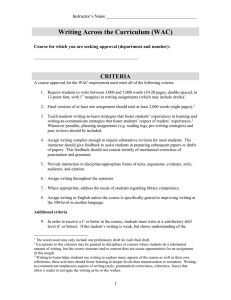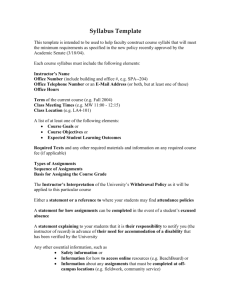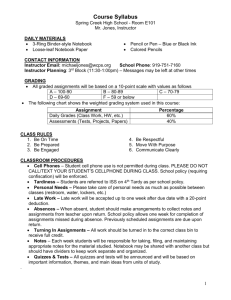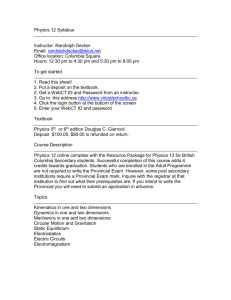E-Learning Form - The College of Saint Rose
advertisement
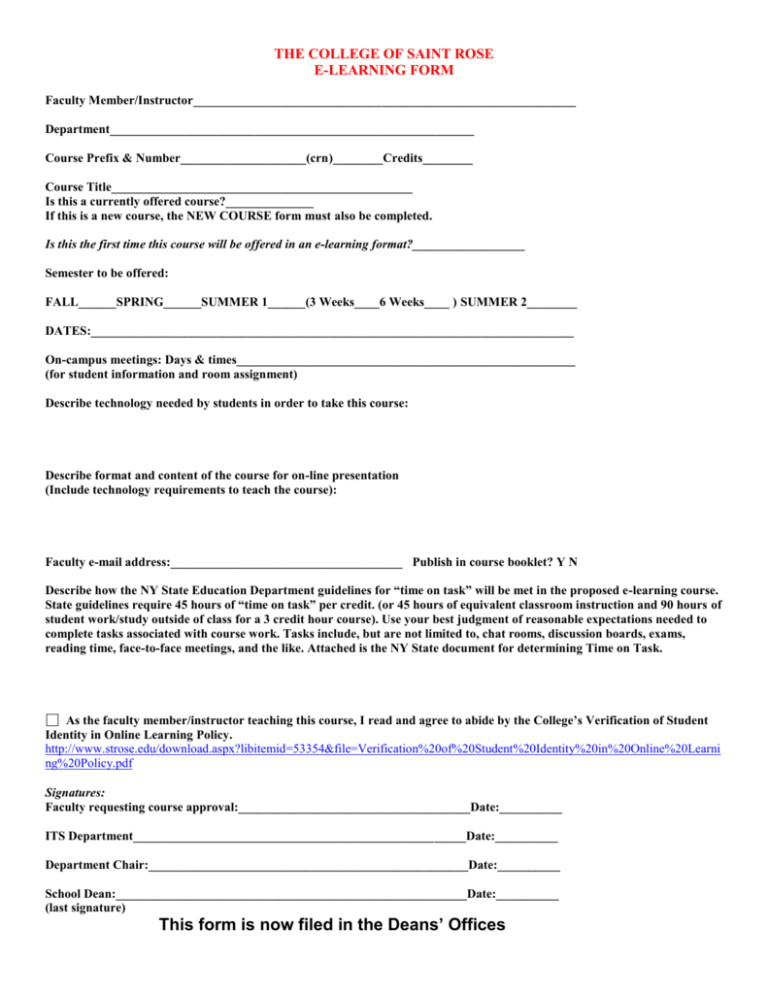
THE COLLEGE OF SAINT ROSE E-LEARNING FORM Faculty Member/Instructor_____________________________________________________________ Department__________________________________________________________ Course Prefix & Number____________________(crn)________Credits________ Course Title________________________________________________ Is this a currently offered course?______________ If this is a new course, the NEW COURSE form must also be completed. Is this the first time this course will be offered in an e-learning format?__________________ Semester to be offered: FALL______SPRING______SUMMER 1______(3 Weeks____6 Weeks____ ) SUMMER 2________ DATES:_____________________________________________________________________________ On-campus meetings: Days & times______________________________________________________ (for student information and room assignment) Describe technology needed by students in order to take this course: Describe format and content of the course for on-line presentation (Include technology requirements to teach the course): Faculty e-mail address:_____________________________________ Publish in course booklet? Y N Describe how the NY State Education Department guidelines for “time on task” will be met in the proposed e-learning course. State guidelines require 45 hours of “time on task” per credit. (or 45 hours of equivalent classroom instruction and 90 hours of student work/study outside of class for a 3 credit hour course). Use your best judgment of reasonable expectations needed to complete tasks associated with course work. Tasks include, but are not limited to, chat rooms, discussion boards, exams, reading time, face-to-face meetings, and the like. Attached is the NY State document for determining Time on Task. As the faculty member/instructor teaching this course, I read and agree to abide by the College’s Verification of Student Identity in Online Learning Policy. http://www.strose.edu/download.aspx?libitemid=53354&file=Verification%20of%20Student%20Identity%20in%20Online%20Learni ng%20Policy.pdf Signatures: Faculty requesting course approval:_____________________________________Date:__________ ITS Department_____________________________________________________Date:__________ Department Chair:___________________________________________________Date:__________ School Dean:________________________________________________________Date:__________ (last signature) This form is now filed in the Deans’ Offices Determining Time on Task in Online Education Time on task is the total learning time spent by a student in a college course, including instructional time as well as time spent studying and completing course assignments (e.g., reading, research, writing, individual and group projects.) Regardless of the delivery method or the particular learning activities employed, the amount of learning time in any college course should meet the guideline of the Carnegie unit, a total of 45 hours for one semester credit (in conventional classroom education this breaks down into 15 hours of instruction plus 30 hours of student work/study out of class.) "Instruction" is provided differently in online courses than in classroom-based courses. Despite the difference in methodology and activities, however, the total "learning time" online can usually be counted. Rather than try to distinguish between "in-class" and "outside-class" time for students, the faculty member developing and/or teaching the online course should calculate how much time a student doing satisfactory work would take to complete the work of the course, including: reading course presentations/ "lectures" reading other materials participation in online discussions doing research writing papers or other assignments completing all other assignments (e.g. projects) The total time spent on these tasks should be roughly equal to that spent on comparable tasks in a classroom-based course. Time spent downloading or uploading documents, troubleshooting technical problems, or in chat rooms (unless on course assignments such as group projects) should not be counted. In determining the time on task for an online course, useful information includes: the course objectives and expected learning outcomes the list of topics in the course outline or syllabus; the textbooks, additional readings, and related education materials (such as software) required statements in course materials informing students of the time and/or effort they are expected to devote to the course or individual parts of it a listing of the pedagogical tools to be used in the online course, how each will be used, and the expectations for participation (e.g., in an online discussion, how many substantive postings will be required of a student for each week or unit?) Theoretically, one should be able to measure any course, regardless of delivery method, by the description of content covered. However, this is difficult for anyone other than the course developer or instructor to determine accurately, since the same statement of content (in a course outline or syllabus) can represent many different levels of breadth and depth in the treatment of that content, and require widely varying amounts of time. December 2014
